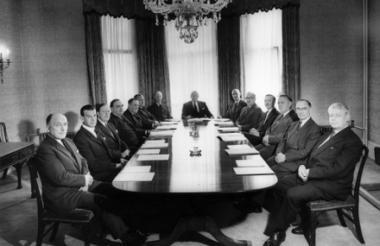Happy new year. We begin 2018 with a much clearer picture of the nature of charity trusteeship; thanks to the Charity Commission’s survey of around 3,500 trustees, we now know for sure that the vast majority of charity boards are indeed “pale, male and stale”, as Governance & Leadership magazine proffered a year ago in its Diversity Issue. Forgive the flippant description – I am well aware that many of the older white men leading our charities feel most indignant at that label, and for good reason; generally they do a sterling job, bring bags of expertise and experience, mostly voluntarily, and nobody should knock them for it – charities would be in a much worse place without their goodwill, brains and energy.
However, as the Charity Commission itself said in response to the report, if your board is disproportionately stacked with the same kind of people from the same kind of background, with the same kind of education and the same kind of views, you are at great risk of groupthink and of “myopic decision-making”. And that does nobody any good – not least your charity’s beneficiaries.
I’m aware that I also harped on about diversity in my last blog on this site. It’s a subject that I, and my colleagues at Civil Society Media, feel very strongly about. If we can convince charities to expand the diversity of expertise, of cultural touchpoints, of life experiences, of thoughts and opinions, around their boardroom tables, then that can only have a positive impact on their charity’s outcomes. This seems blindingly obvious to me, and to most people I speak to about it.
Yet the fact remains – and proven now by the trustee survey – that more than nine in ten trustees are white. It’s a similar ratio among our chief executives and senior management teams. We’re almost inured to the fact, because we have always suspected so – but this is a really shocking state of affairs, especially in a sector that exists to tackle exclusion and disadvantage, and to help people at the margins of society. Thomas Lawson, the white chief executive of youth charity Leap Confronting Conflict, has had enough: in this thoughtpiece here.
Lawson issues a powerful call to action to other charity leaders to tackle the subconscious biases that mean black and minority ethnic people have to work twice as hard as their white counterparts to achieve their dreams. As he says: “If our sector cannot demonstrate diversity in its leadership, then we’re not in a position to challenge the rest of society to improve.”
Let’s make 2018 the year that we really start to move the dial on diversity in charity leadership. Lawson makes some sensible suggestions for how to do so in his article; I want to make one more. Add the following discussion item to the agenda of your first trustee meeting of the year: “Is our trustee board sufficiently diverse to prevent groupthink, and add the greatest possible value to our work?”.









